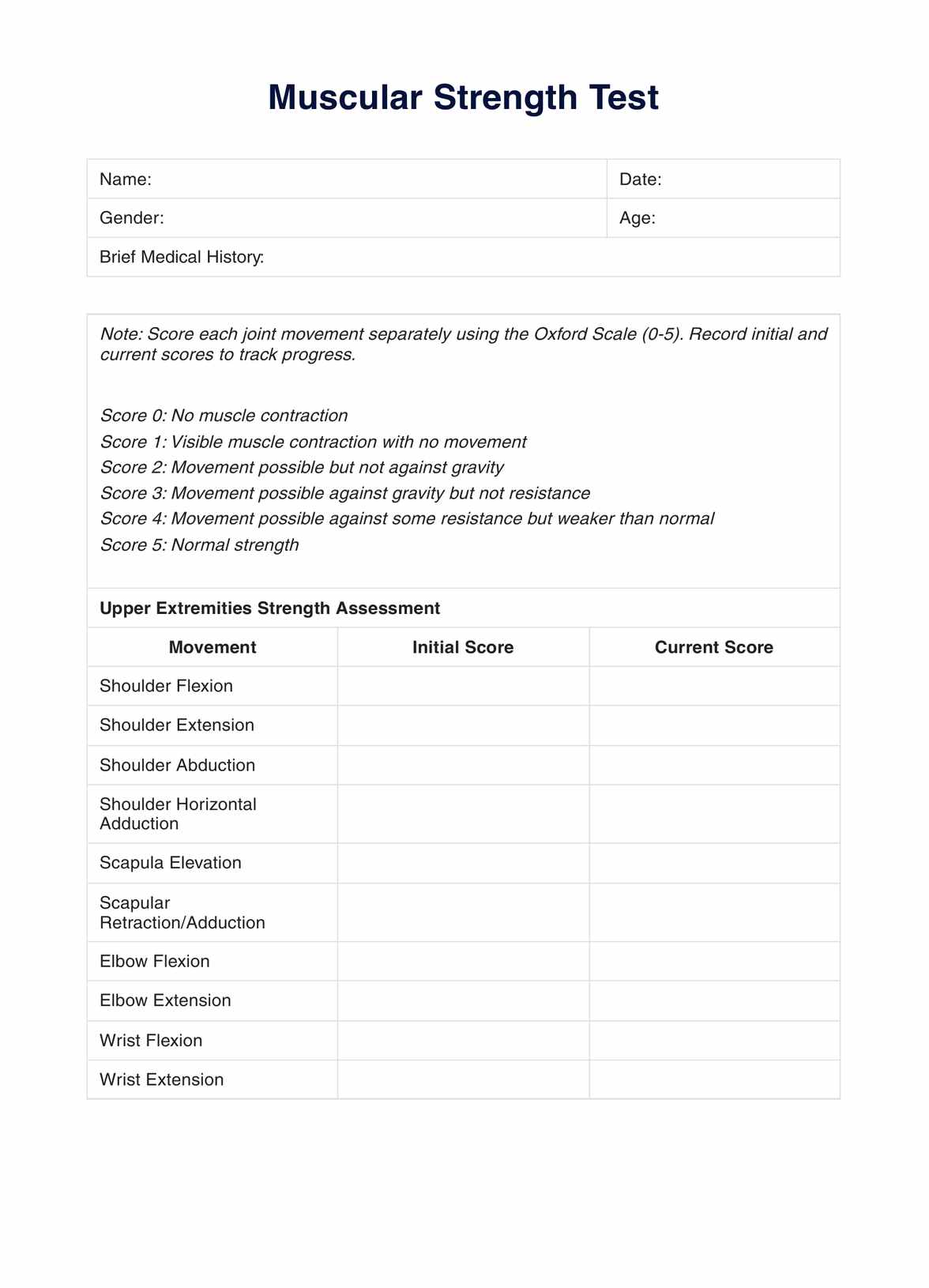The test for muscle strength, often involving the Oxford Scale, assesses muscle power on a scale of 0 to 5, measuring how muscles perform against resistance.

Muscular Strength Test
Explore the Muscular Strength Test template, a comprehensive tool for healthcare professionals to effectively assess and enhance patient muscle strength.
Use Template
Muscular Strength Test Template
Commonly asked questions
You can test muscular strength at home using bodyweight exercises like push-ups, squats, and sit-ups, noting the maximum repetitions you can perform.
The best assessment of muscular strength combines manual muscle testing, functional movement assessments, and standardized tests like the Oxford Scale.
EHR and practice management software
Get started for free
*No credit card required
Free
$0/usd
Unlimited clients
Telehealth
1GB of storage
Client portal text
Automated billing and online payments











